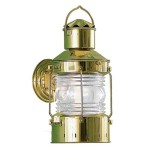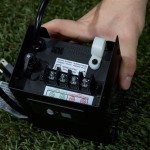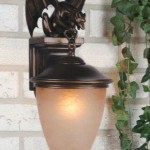How Do You Program a Stanley Outdoor Timer?
Stanley outdoor timers provide a convenient way to automate outdoor lighting and other electrical devices. Proper programming ensures these devices function as intended, conserving energy and enhancing security. This article provides a comprehensive guide to programming various Stanley outdoor timer models, addressing common features and troubleshooting tips.
Understanding Your Stanley Timer Model
Stanley offers a range of outdoor timers with varying features and functionalities. Before attempting to program the timer, it's crucial to identify the specific model. The model number is typically located on the back or bottom of the timer. Consulting the user manual specific to the model is highly recommended. The manual will provide detailed instructions tailored to the timer's unique features and programming steps.
Common Stanley timer types include mechanical timers, digital timers, and smart timers. Mechanical timers utilize a dial and pins for setting on/off times. Digital timers offer a more precise digital interface for programming. Smart timers often incorporate Wi-Fi connectivity, enabling remote control and advanced scheduling options through a smartphone app.
Basic Programming Steps for a Digital Timer
While specific steps may vary depending on the model, most digital Stanley timers follow a similar programming logic. The following outlines the general procedure:
1. Setting the Current Time: Locate the "Clock" or "Time" button and press it. Use the up and down arrows or designated buttons to adjust the hour and minutes. Ensure the AM/PM setting is correct. Some models might require setting the day of the week as well.
2. Programming the ON Time: Press the "Timer" or "Program" button. Select an available program slot (e.g., "Program 1"). Set the desired ON time using the arrow buttons or numerical keypad. Ensure the AM/PM is correctly set.
3. Programming the OFF Time: With the same program slot selected, locate the "Off" button or navigate to the OFF time setting. Set the desired OFF time using the arrow buttons or numerical keypad. Ensure the AM/PM is correctly set.
4. Repeating the Process: Repeat steps 2 and 3 for additional program slots as needed. Most digital timers allow for multiple ON/OFF cycles throughout the day.
5. Selecting Days of the Week: For each program slot, choose the days of the week on which the program should run. This is typically done by pressing the "Day" button or navigating to the day selection within the program settings. Options usually include individual days, weekdays only, weekends only, or all seven days.
6. Enabling the Program: Ensure the program is enabled by selecting "Auto" or a similar option. Some timers have a manual override option, typically labeled "On," "Off," or "Auto."
Programming Considerations for Mechanical Timers
Mechanical timers operate differently from digital timers. They typically involve a rotating dial with segmented pins that represent on/off periods. The following steps provide general guidance:
1. Setting the Current Time: Rotate the dial clockwise until the current time aligns with the indicator mark.
2. Setting ON/OFF Times: Locate the pins around the edge of the dial. Push the pins outward for the periods when you want the device to be ON and inward for OFF periods. Each pin typically represents a 15-minute interval. For example, pushing out four consecutive pins would activate the timer for one hour.
3. Manual Override: Mechanical timers often have a manual override switch to turn the connected device on or off regardless of the programmed schedule.
Troubleshooting Common Issues
If the timer isn't functioning as expected, check the following:
1. Power Supply: Ensure the timer is plugged into a functioning outlet and that the outlet has power.
2. Circuit Breaker: Verify that the circuit breaker controlling the outlet hasn't tripped.
3. GFCI Outlet: If the outlet is a GFCI (Ground Fault Circuit Interrupter), ensure it hasn't tripped. Press the "Reset" button on the GFCI outlet.
4. Connection to Device: Check that the device you're trying to control is properly plugged into the timer.
5. Program Settings: Review the programmed ON/OFF times, days of the week, and AM/PM settings. Ensure they are correctly configured according to your desired schedule.
6. Manual Override: If the timer has a manual override switch, ensure it's in the correct position ("Auto" for programmed operation).
7. Battery Backup (for Digital Timers): Some digital timers have a battery backup to maintain the clock and program settings during power outages. Check if the battery needs replacement.
8. User Manual: Refer to the specific user manual for your timer model for detailed troubleshooting steps and information about any error codes displayed.

Instructions On How To Program A Simple Noma Stanley Outdoor Timer

Digital Light Timer Select Twin Stanley Electrical Accessories

Stanley Lighttimer Select Trio Outdoor Darkness Sensing Timer

Stanley Lighttimer Select Trio Outdoor Darkness Sensing Timer

Stanley 2 Outdoor Photocell Timer W38463 Blain S Farm Fleet

How To Program And Set Time On The Westinghouse Automatic Electric Timer

Stanley 2 Outdoor Photocell Timer W38463 Blain S Farm Fleet

Westinghouse Timers And Manuals

How To Set A Plug Timer Mechanical Digital Switches

Stanley Plugbank 6 Remote Stacker Meijer
Related Posts







